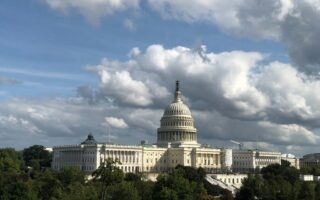New FFCRA Guidance from the Department of Labor
By Kevin M. Mosher • Apr 30, 2020
The Families First Coronavirus Response Act (FFCRA) has been in effect for a whole month now. Unsurprisingly, employers have faced unforeseen issues and confusion in attempting to implement the new policies. Luckily, the U.S. Department of Labor continues to provide information on how employers can comply with the FFCRA. Below is a breakdown of the latest DOL guidance.
Are employees entitled to leave if they are choosing to self-quarantine?
Though the CDC recommends limiting exposure to others, employees are not entitled to paid leave under the FFCRA if they simply decide they would like to self-quarantine. Employees are only eligible for paid leave under the FFCRA to self-quarantine if a health care provider has directed them to stay home or otherwise quarantine themselves because the health care provider believes the employee has COVID-19 or is particularly vulnerable to COVID-19.
Are employees entitled to FFCRA leave if they have any COVID-19 symptoms?
It depends—an employee experiencing COVID-19 symptoms is entitled to FFCRA leave in order to receive a diagnosis or if they have been directed by a health care provider to self-quarantine. Employees who do not seek a diagnosis or medical care do not qualify for paid leave under the FFCRA.
Is an employee entitled to continue FFCRA leave if the COVID-19 test comes back negative?
No. Employees are only entitled to take leave under the FFCRA for reasons related to COVID-19. If an employee received FFCRA leave in order to get a diagnosis for COVID-19 but ultimately tests negative, they are no longer eligible for FFCRA leave.
Are employees eligible for FFCRA leave to care for children under the age of 18?
Yes. Employees may take leave under the FFCRA to care for children under the age of 18 or to care for disabled adult children who cannot care for themselves if the child’s school or care provider is unavailable due to COVID-19 related reasons. However, this leave is only available if the employee is unable to work or telework as a result of their child’s school or care provider being closed or unavailable.
What is a place of care, and who is child care provider under the FFCRA?
A place of care is anywhere in which care is provided for a child, such as a day care facility, preschool, before and after school care program, school, home, summer camp, summer enrichment program, and the like. A child care provider is anyone who cares for your child, whether they are paid or unpaid. Nannies, au pairs, babysitters, grandparents, neighbors, or family members who care for children are considered child care providers under the FFCRA.
Can both parents take paid leave under the FFCRA to care for shared children?
Leave should only be taken when it is genuinely needed and when the employee cannot work because they need to care for a child. Generally, such leave is not necessary when a co-parent, co-guardian, or child care provider is available to provide the care the employee’s child needs.
Is my child’s school technically closed if they are using distance learning?
Yes, so long as the physical location is closed.
What if my employee wants to take leave to care for another person’s child?
To qualify for leave for child care purposes under the FFCRA, the child must be the employee’s “son or daughter.” “Son or daughter” is defined as a biological, adopted, or foster child, a step child, a legal ward, or a child for whom the employee is standing in loco parentis, meaning a child for whom the employee is responsible for day-to-day and financially supports. However, the employee may be eligible to take two weeks of leave to care for a child who is subject to a quarantine order under the Emergency Paid Sick Leave Act (EPSLA) if the employee has a relationship with the child such that the employee would be expected to provide such care.
What does the “substantially similar reason” (listed as the sixth reason for leave) under the EPSLA mean?
It doesn’t mean anything—yet. The U.S. Department of Health and Human Services may define what constitutes a “substantially similar condition” at a later date. We will keep you posted!
How do I calculate the amount of leave to provide seasonal employees or employees with irregular schedules?
Employees are entitled to two weeks of leave under the EPSLA. If you cannot determine how many hours the employee would have normally worked over a two-week period, you must estimate the average number of hours the employee works per day. You can calculate the average number of daily hours worked by adding up the number of hours the employee worked in the six months preceding leave and dividing that total by the number of days worked in the same six-month period. Include all scheduled hours, including the hours the employee took leave. For seasonal employees, don’t include any off-season periods where the employee didn’t work.
How do I calculate an employee’s average regular rate?
The “average regular rate” is trickier than it sounds, especially for employees whose wages fluctuate from week to week.
-
Compute the employee’s non-excludable remuneration for each full workweek during the previous six months. Commission and piece-rate pay counts towards this amount. However, tips only apply if they are being counted towards minimum wage obligations. Overtime premiums should not be included, nor should payments the employee received for taking leave.
-
Compute the number of hours actually worked for each full workweek during the six-month period—don’t include hours when the employee took leave.
-
Divide the total of all non-excludable remuneration received over the six-month period by the number of hours actually worked by the employee during that period. That is the employee’s average regular rate.
Once this rate is calculated, it can be used whenever the employee takes FFCRA leave while the law is in effect.
How do I compute the average hourly rate for employees with a fixed salary if they don’t work the same number of hours each week?
Do your best. If you don’t have the records to determine how many hours the employee usually works each week, use a reasonable estimate to ascertain the employee’s average regular rate.
Can employees who receive workers’ compensation or temporary disability benefits through their employer take FFCRA leave?
No, unless the employee was able to return to light duty and then a qualifying reason for FFCRA leave prohibited them from going back to work.
Can employees who are out on a leave of absence take paid leave under the FFCRA?
If the leave is voluntary, the employee can end the leave and then take FFCRA leave if they are eligible, meaning they are unable to work or telework for one of the reasons outlined in the FFCRA. If the leave of absence is involuntary, the employee cannot take paid FFCRA leave, but will probably qualify for unemployment insurance benefits.
Can employees be required to take PTO when taking leave for any of the reasons under the FFCRA?
In most circumstances, no. FFCRA leave is in addition to any form of paid or unpaid leave you provide. However, you can require employees to use any paid leave available to them concurrently with childcare leave under the EFMLEA. In this situation, the employee would continue receiving their full salary, but the employer can obtain a tax credit for 2/3 of the pay up to $200 per day. If the employee exhausts their PTO before exhausting EFMLEA leave, they can continue receiving 2/3 pay under the EFMLEA for the remainder of the leave. However, you cannot require the employee to take EPSLA leave and PTO for the first two weeks of EFMLEA leave, which are unpaid. During the unpaid period of EFMELA leave, the employee may choose to use EPSLA leave or PTO.
Going Forward
myHRgenius and Thompson Coe continue to monitor the DOL guidance for updates in interpreting the FFCRA. For more information, including webinars, primers, summaries and podcasts on COVID-19 go to www.myhrgenius.co or www.thompsoncoe.com or call 651-389-5080.
Thompson Coe and myHRgenius Tip of the Week is not intended as a solicitation, does not constitute legal advice, and does not establish an attorney-client relationship.










